Anyone who wants to build up or maintain a repertoire for 1.e4 must study the Sicilian Defence intensively, as it is the most commonly played response to 1.e4 alongside 1…e5. ChessBase offers various major Fritz trainers on this topic, which deal in detail with, for example, the Open Sicilians (2.Nf3 and 3.d4) or the systems with 3.Bb5 (Rossolimo, Moscow Variation). Here are two examples with several parts:
Dutch Grandmaster Roeland Pruijssers and International Master Nico Zwirs created a complete repertoire against the Sicilian that is based on the Open Sicilian and that is easy to learn. They show patterns you should know when playing the Open Sicilian
These DVDs will show you dangerous new sidelines that are ideal for combatting the Sicilian after 1.e4 c5 2.Nf3 Nc6/d6 3.Bb5(+), with your author giving you the positional ideas behind less well-trodden Sicilian paths that avoid the main and winding main
There are also a number of Fritz trainers for other popular variations such as various closed systems (2.Sc3) or the Alapin variation (2.c3). In contrast, the “60 Minute” courses usually discuss rare or surprisingly new variations that can be used either to supplement your repertoire or as an alternative surprise weapon. In the following overview, I would like to present some of the “60 Minute” courses against Sicilian in more detail.
Complete repertoires against the Sicilian
An Anti-Sicilian Repertoire (Loek van Wely)
Tired of spending hours and hours on the boring theory of your favourite opening? Then here is your solution, play an Anti-Sicilian with 3.Bb5 against 2…d6 or 2…Nc6, and 3.d3 against 2…e6. In 60 minutes you will get a crash course in how to avoid mainstream theory and in understanding the ideas of this Anti-Sicilian setup. After these 60 minutes you should be able to survive the Sicilian for a long time, without being bothered by new developments found by engine x supported by an x-core machine. Now that it finally comes down to understanding, let’s play chess!
In this course, the Dutch GM presents a complete repertoire based on the Rossolimo/Moscow Variations with 3.Bb5(+). Seven videos explain the most important responses to 1.e4 c5 2.Nf3 d6 3.Bb5+ and 1.e4 c5 2.Nf3 Nc6 3.Bb5.
He also has a repertoire suggestion for 2…e6 with 3.d3. Even though such a course can only offer limited breadth and depth in 60 minutes, it is still suitable for you if:
- You have not yet made a final decision on the 3.Bb5 system and are looking for a compact overview as a basis for your decision.
- You only have a limited budget (time and money) for studying openings and are looking for a compact course covering the most important variations.
A remarkable weapon against the Sicilian – 2.Na3 (Christian Bauer)
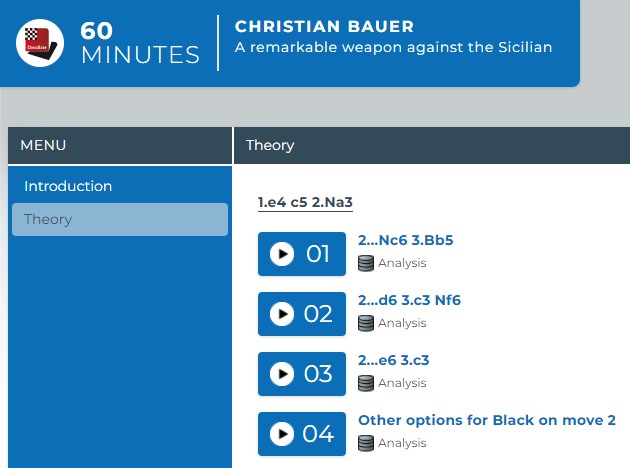
This course is available in English and in German.
Christian Bauer’s 2.Na3 course also offers us a complete repertoire for White. His move 2.Na3 is an intelligent waiting move, which first wants to see the opponent’s development before presenting its own plans. In many cases, the resulting positions resemble those of Alapin (2.c3) or 3.Bb5 variations.
The course is particularly suitable for players who already have experience with the Alapin, 3.Bb5 or other closed Sicilian variations and want to get their opponents out of book with the flexible 2.Na3. The topic is quite challenging, so in my opinion, the course is less suitable for those who are not keen on theory and want to tick off the Sicilian topic with a “simple” variation with as little learning material as possible.
Supplementary courses for 3.Bb5 players against 1.e4 c5 2.Nf3 e6
If you like to play the Rossolimo and Moscow variations with 3.Bb5, you also need a response to the frequently played 2…e6. The following courses offer you different repertoire suggestions on this topic.
The delayed Alapin (Harsha Bharathakoti)
Looking to surprise your opponents and sidestep the well-known Sicilian defenses? The Delayed Alapin offers a unique way to cut off many standard variations, making it an ideal weapon even against top-level players, including Grandmasters.
Looking to surprise your opponents and sidestep the well-known Sicilian defences? The Delayed Alapin offers a unique way to cut off many standard variations, making it an ideal weapon against even top-level players, including Grandmasters. The rarely played 4.Bd3 introduces a hidden tactical edge that can catch your opponents off guard. In this course, you’ll learn how to seize an early advantage if Black isn’t precise, and see how White can consistently create aggressive, fighting positions. Black will be forced to play with pinpoint accuracy just to maintain equality. If you’re an aggressive player seeking a powerful, surprise-filled opening against the Sicilian, this course is tailor-made for you!
Supported by Arne Kähler, the young Indian GM presents the “delayed Alapin” variation with Bd3.
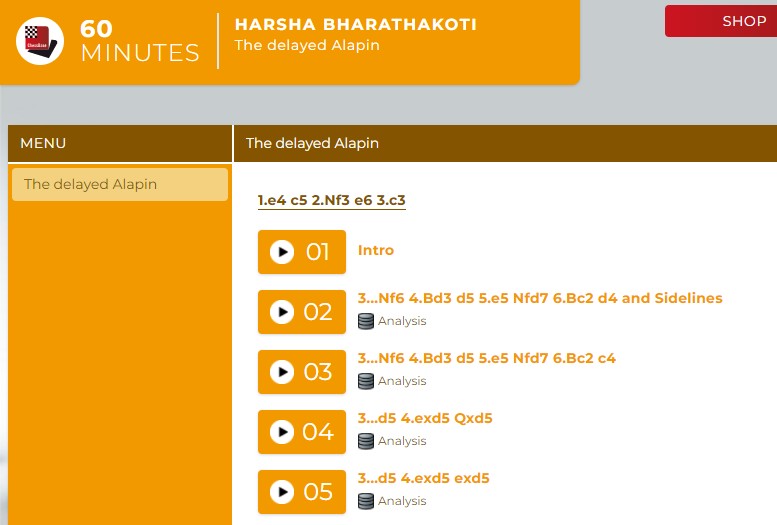
3.c3, i.e. the switch to the Alapin Variation (2.c3), is nothing new in itself, but the continuation 4.Bd3 to the main move 3…Nf6 is.
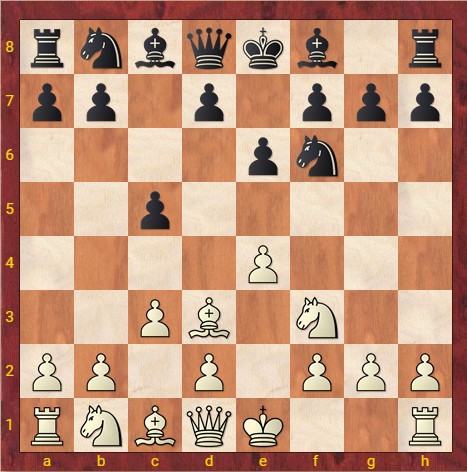
This move is an interesting alternative to the usual 4.e5, which leads to well-known positions in the Alapin Variation. In addition to this special variation, the author also discusses the other important responses to 3…d5: 4.exd5 Qxd5 and 4.exd5 exd5.
A modern approach against the 2…e6-Sicilian (Jan Werle)
The author of the two large 3.Bb5 courses provides an answer to the question of 2…e6 in this 60 Minutes course.
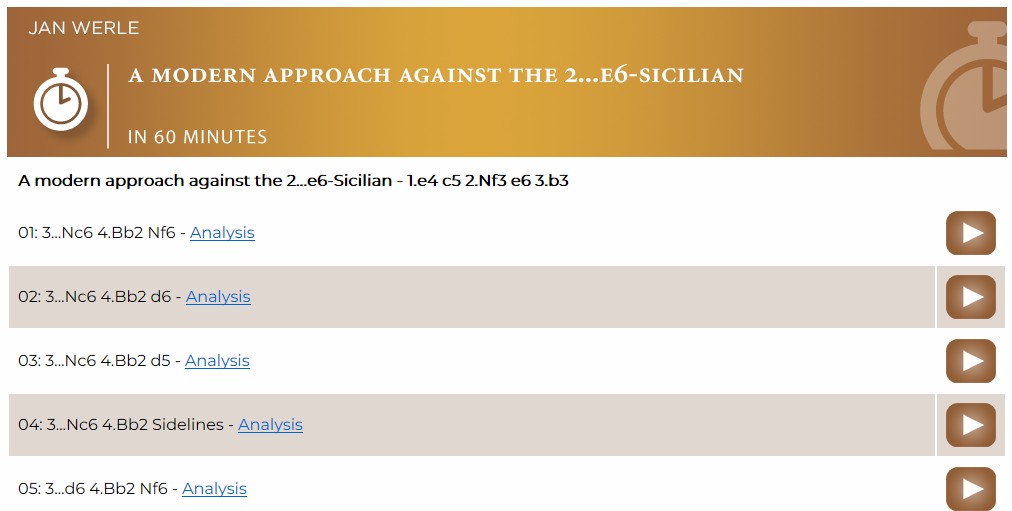
His response is the move 3.b3, followed by the fianchetto of the black-squared bishop. In doing so, he covers all the important black variations such as 3. … Nc6, d6, b6 and a6.
A dangerous Anti-Sicilian: 1.e4 c5 2.Nf3 e6 3.g3! (Andrew Martin)
The well-known English IM and author has a different suggestion here. With 3.g3, White switches to a kind of King’s Indian Attack with Bg2 and Qe2.
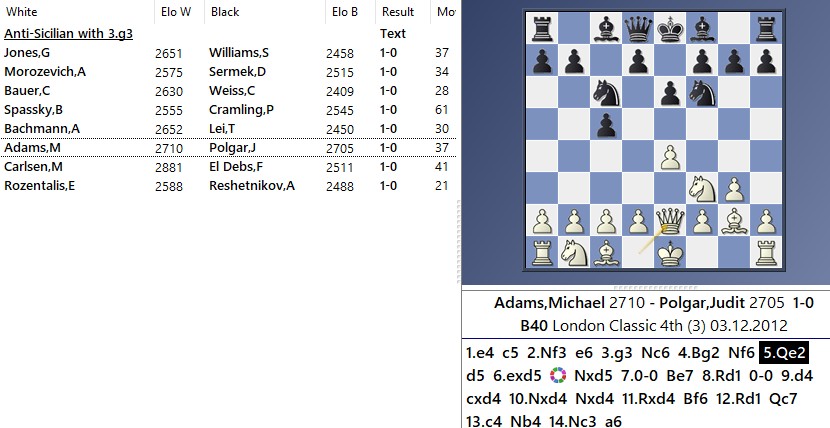
The author explains this set-up using selected games. Here, it is more important to understand the resulting positions than to memorise variations.
Variations against the Sicilian with 2. …d6
The following two courses deal with systems against a black setup with 2…d6 with 3.d4 and the subsequent 4.Qxd4. The difference, however, lies in White’s second move. Markus Ragger’s course covers the move sequence 1.e4 c5 2.Nf3 d6 3.d4 cxd4 4.Qxd4, while Lawrence Trent’s course covers the Gashimov Variation 1.e4 c5 2.Nc3 d6 3.d4 cxd4 4.Qxd4.
A surprise weapon against the Sicilian with 2…d6 (Markus Ragger)
I really liked how the Austrian author in this course addressed the different interpretations of the variation by various masters.
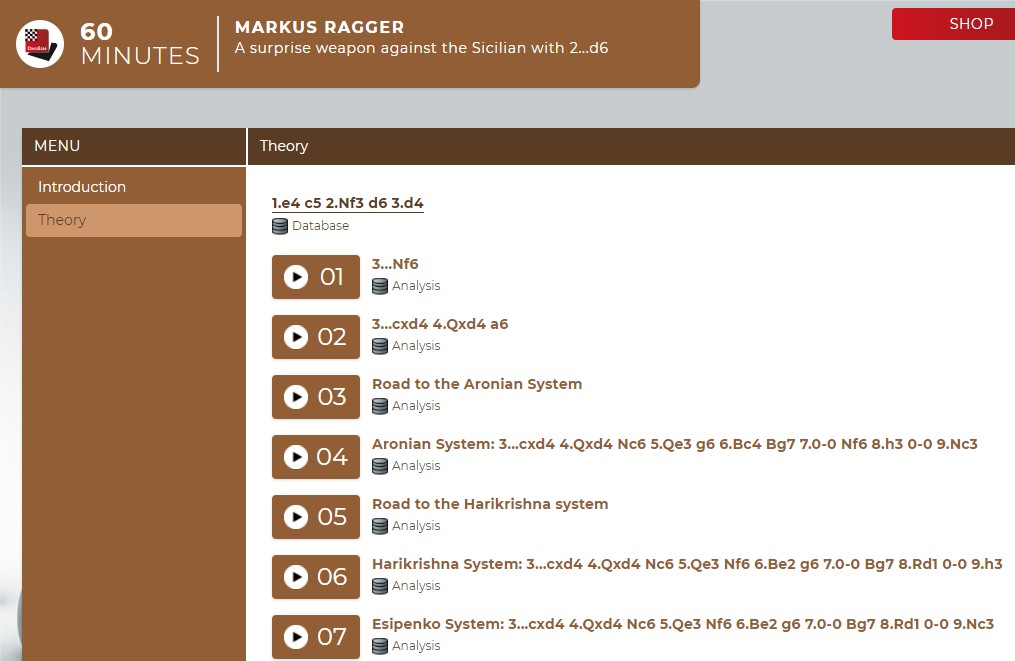
This course is available in English and in German.
He calls these different lines the Aronian System, the Harikrishna System and the Esipenko System. A common feature of these systems is that White usually wants to castle short. This distinguishes this variation from the Gashimov Variation with 2.Nc3, which is discussed in the following course by Lawrence Trent.
The Sicilian Gashimov Variation (Lawrence Trent)
Trent discusses the move 2.Nc3 followed by 3.d4. As can be seen from the list of variations, this system is based on rapid development of the white queenside with b3, Bb2 and long castling.
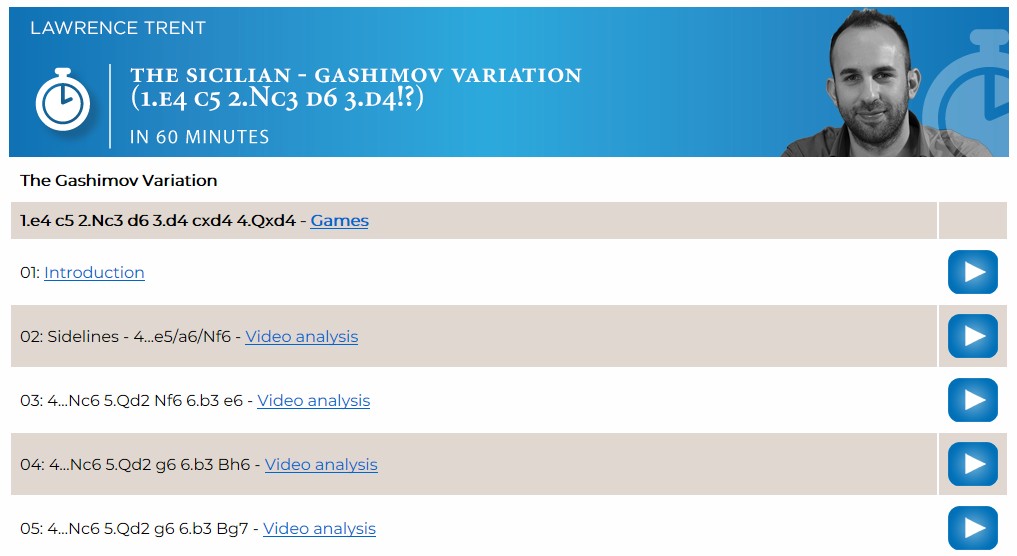
As the well-known English IM and commentator skilfully explains, this structure promises the attacker both a fairly stable king position and good attacking opportunities on the kingside.
The Open Sicilian
As mentioned in the introduction, in this article I will consider variations for 1.e4 players against the Sicilian and not courses with recommendations for Sicilian players (with one exception). This category of courses on specific variations includes two courses that deal with the Taimanov Variation (1.e4 c5 2.Nf3 e6 3.d4 cxd4 4.Nxd4 Nc6).
The Popov Variation against the Taimanov (Nico Zwirs)
This variation arises after the opening moves: 1.e4 c5 2.Nf3 e6 3.d4 cxd4 4.Nxd4 Nc6 5.Nc3 Qc7 6.Be3 a6 7.Qd2 Nf6, when White, instead of initiating the English Attack with 8.0-0-0 or f3, continues with 8.f4:
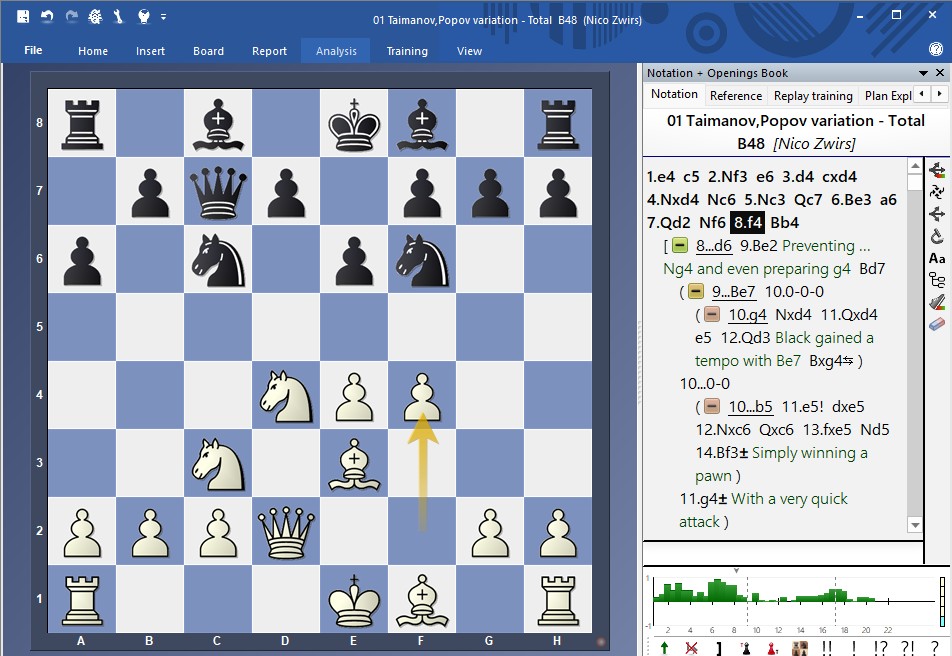
Nico Zwirs analyses the three most common continuations here: 8…Bb4, …d6 and …b5.
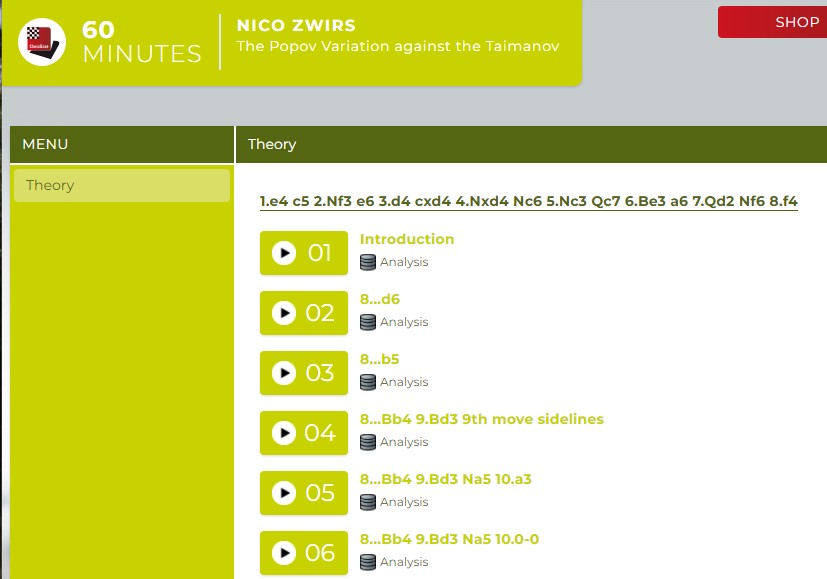
Attacking the Taimanov with g4 in 60 Minutes (Sipke Ernst)
The Dutch GM and trainer examines a form of the Accelerated English Attack, in which White attacks with g4 as early as the 7th move, without first developing with Qd2 and 0-0-0.
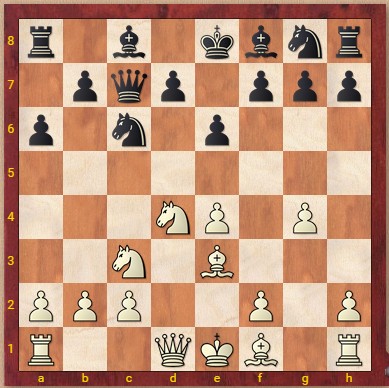
I really like the fact that Ernst not only offers the theoretical variations, but also includes a bonus database with model games on the topic and positions to play through with Fritz:
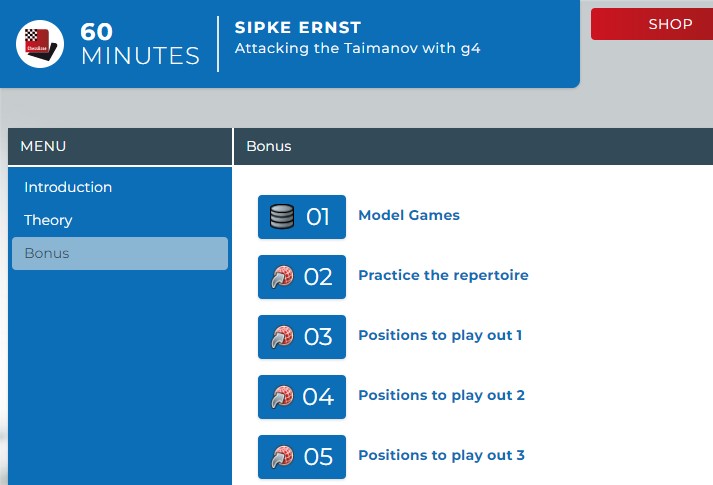
An attacking weapon versus the Najdorf (Nico Zwirs)
Shortly before this article was completed, another 60 Minutes course on our topic was published, which I would like to share with you, not least because it presents an interesting repertoire against the very popular Najdorf Variation.
As mentioned in the description, “Dutch IM Nico Zwirs shows how to combine direct attacking play with powerful strategy. The idea: exchange the black-squared bishop for a knight, play f4–f5, force …e5 – and then dominate the magnificent square d5.”
I was particularly curious to see how the author would deal with what is probably the most critical variation, the Poisoned Pawn Variation that arises after 1.e4 c5 2.Nf3 d6 3.d4 cxd4 4.Nxd4 Nf6 5.Nc3 a6 6.Bg5 e6 7.f4 Qb6.
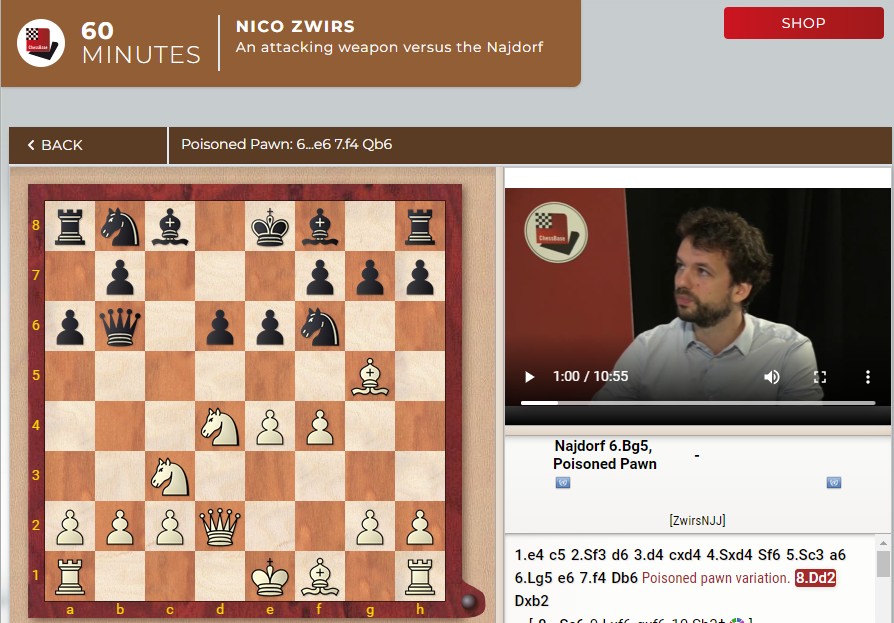
Nico Zwirs does not have a “simple” solution up his sleeve either – you have to be prepared to deal with the wild complications if Black chooses this risky variation, but in just under eleven minutes, the author shows us how White can achieve playable positions here. Here is an overview of the variations shown in the course:
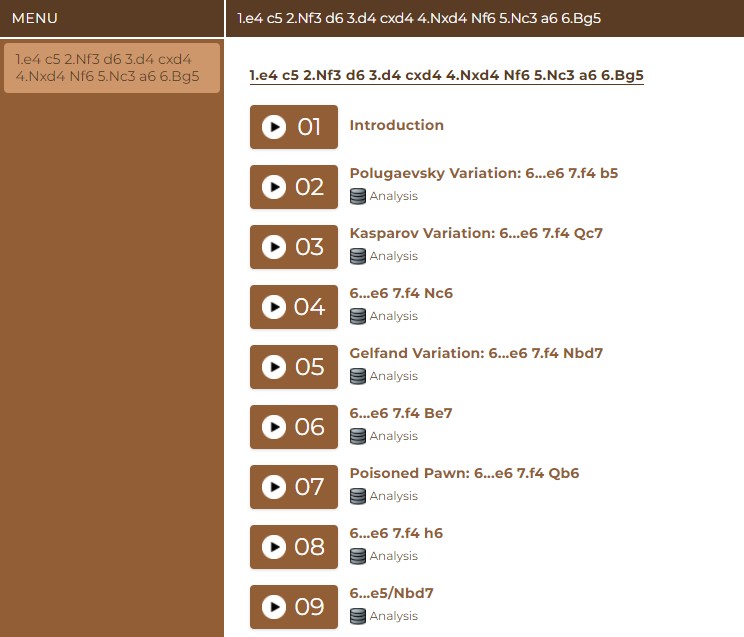
Variety is the spice of life: a repertoire for Black against the Open Sicilian
There’s no rule without an exception! As a departure from the courses presented so far, I would like to introduce you to the course …
Surprising Your Opponents with the Lazy Sicilian (Svitlana Demchenko)
In just 60 minutes, you will be well-equipped with a surprise weapon, which will take most of your opponents out of book right from the start.
The Canadian WIM presents an easy-to-learn repertoire for those who dislike theory, which can also be used as a surprise weapon. Her “Lazy Sicilian” arises after 1.e4 c5 2.Nf3 e6 3.d4 cxd4 4.Nxd4 Bc5.
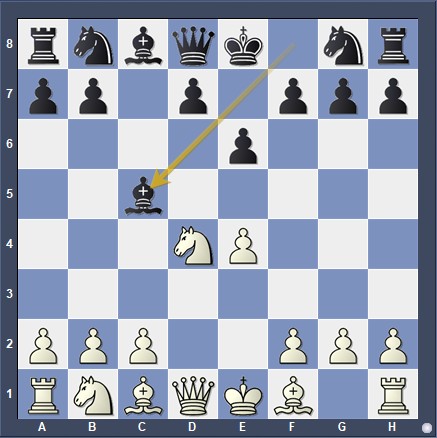
It may be that this variation is not 100 per cent correct, but White must first prove this and have studied the theory intensively beforehand, which is unlikely to be the case, especially among amateurs.
I like the fact that, in addition to the theory, the author also offers two training videos in the interactive Fritz Trainer format, which allow us to test the variations and tactical pitfalls we have learned.
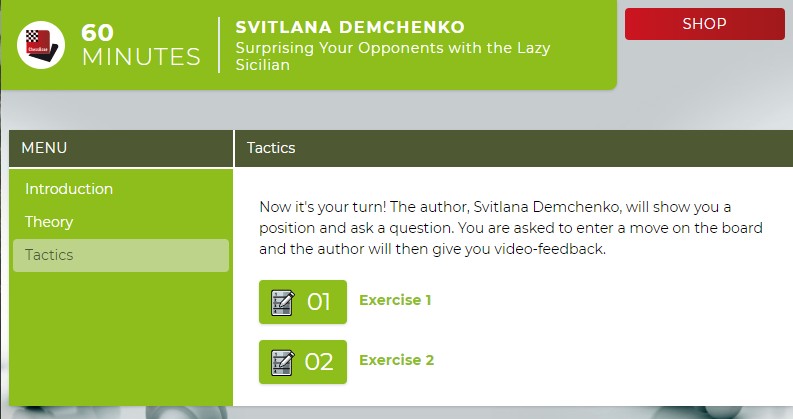
Summary
For me, some of the 60 Minute courses are a good supplement to the major Fritz trainers and good reference books. The learning material per course is always manageable and easy to grasp. An hour of concentrated training is always possible!
I have already added the delayed Alapin variation to my repertoire, and Markus Ragger’s system based on 2…d6 will follow. With Black, I will try out the Lazy Sicilian.
